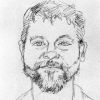8 Best-Selling Environmental Engineering Books Millions Love
Discover top Environmental Engineering books championed by David Roberts, Jacquelyn Gill, and John Elkington—trusted voices shaping best-selling picks.



There's something special about books that both experts and millions of readers trust to illuminate Environmental Engineering. As our world faces complex challenges—from climate change to water scarcity—the practical knowledge in these texts offers tested strategies and compelling insights. Environmental Engineering isn't just a discipline; it's a toolkit for addressing critical sustainability issues with proven approaches that have stood the test of time.
Experts like David Roberts, an influential energy commentator, and Jacquelyn Gill, associate professor at UMaine’s Climate Change Institute, have spotlighted books like Drawdown for making climate solutions tangible and accessible. Meanwhile, John Elkington, a sustainable development authority, praises the comprehensive impact of these works in shaping environmental thought and practice. Their endorsements highlight how these books bridge academic rigor and real-world application.
While these popular books provide proven frameworks, readers seeking content tailored to their specific Environmental Engineering needs might consider creating a personalized Environmental Engineering book that combines these validated approaches. This personalized path can deepen your understanding and sharpen your focus on the areas most relevant to your goals.
Recommended by David Roberts
Energy politics blogger and climate commentator
“There’s been no real way for ordinary people to get an understanding of what they can do and what impact it can have. There remains no single, comprehensive, reliable compendium of carbon-reduction solutions across sectors. At least until now. . . . The public is hungry for this kind of practical wisdom.”
Paul Hawken's decades of environmental activism and entrepreneurial experience shape this book into a detailed roadmap addressing climate change. You’ll explore 100 scientifically vetted solutions ranging from clean energy adoption to innovative land management practices, each backed by data and real-world implementation examples. The book breaks down complex climate strategies into understandable measures you can follow, revealing not just how to reduce carbon emissions but also how these solutions benefit communities and economies globally. If you're looking to grasp practical methods for tackling global warming with evidence-based confidence, this book offers a clear-eyed path without oversimplifying the challenges involved.
by Rachel Carson··You?
by Rachel Carson··You?
Rachel Carson, a marine biologist with the U.S. Fish and Wildlife Service, wrote Silent Spring to expose the dangers of indiscriminate pesticide use, especially DDT. You’ll gain a detailed understanding of how chemical pollutants affect ecosystems and human health, with chapters that trace the environmental impact from insecticides to broader pollution effects. This book benefits anyone interested in environmental science, policy, or engineering by revealing how scientific research can drive social change. Its historical context and clear explanations make it more than just a scientific treatise—it’s a call to rethink humanity’s relationship with nature.
by TailoredRead AI·
This tailored book explores detailed, actionable methods for solving complex environmental engineering problems, focusing on your specific interests and goals. It covers core topics like water treatment, waste management, air quality control, and sustainable infrastructure, blending foundational principles with practical problem-solving techniques. By matching your background and objectives, this personalized guide reveals how to tackle challenges from pollution mitigation to resource recovery effectively. The tailored content ensures you engage deeply with the subjects most relevant to your work or study, enhancing your understanding and skills with a clear, focused approach. Whether addressing urban wastewater or innovative remediation, this book offers an insightful learning journey designed just for you.
by C. David Cooper·You?
by C. David Cooper·You?
After analyzing decades of teaching experience, C. David Cooper developed this book to bridge the gap between theory and practice in environmental engineering. You’ll learn how to apply material and energy balances to tackle real environmental problems, from water treatment to air pollution control, using clear examples and stepwise solutions. The book covers essential topics like wastewater treatment, solid waste management, and risk assessment with a practical approach that benefits both students and practicing engineers. If you want a solid foundation that integrates science and engineering principles in an accessible way, this introduction offers a structured path without overwhelming technical jargon.
by Howard S Peavy, Donald R Rowe, George Tchobanoglous··You?
by Howard S Peavy, Donald R Rowe, George Tchobanoglous··You?
Unlike most environmental engineering books that focus narrowly on individual waste streams, this text integrates water, air, and solid waste management with an emphasis on natural purification processes and engineered systems. Howard S Peavy, with decades of expertise, guides you through the physical, chemical, mathematical, and biological principles that define environmental quality, before exploring how nature assimilates waste and how these processes inspire engineering solutions. You'll find detailed discussions on designing and operating environmental engineering works, supported by clear illustrations and practical problems, making complex concepts accessible to students and professionals alike. This book suits anyone seeking a thorough understanding of environmental systems and the engineering approaches to managing them.
by Robert A. Corbitt·You?
by Robert A. Corbitt·You?
What makes this handbook a staple in environmental engineering circles is its thoroughness and practical orientation. Edited by Robert A. Corbitt and crafted with contributions from 36 field experts, it offers you extensive insight into critical topics such as air quality control, water supply, and hazardous waste management. You’ll find over 900 tables, charts, and drawings that turn complex regulations and technologies into accessible references. Whether you're setting priorities for environmental compliance or managing waste systems, this book equips you with the data and framework to navigate evolving standards effectively. It's tailored for professionals who must stay current with legislation and technical details in environmental engineering.
by TailoredRead AI·
This tailored book delves into targeted pollution reduction strategies designed to deliver measurable improvements within a month. It explores key environmental safeguards, examining air, water, and soil pollution controls with a focus that matches your background and specific goals. Personalized content ensures you engage with methods most relevant to your interests, facilitating a practical grasp of effective interventions. By combining widely validated knowledge with your unique focus areas, the book reveals actionable steps to monitor and reduce pollutants efficiently. This approach empowers you to quickly implement and evaluate environmental measures, making tangible progress in pollution control that aligns precisely with your priorities and expertise.
by James R. Mihelcic, Lauren M. Fry, Elizabeth A. Myre, Linda D. Phillips, Brian D. Barkdoll, Jimmy Carter··You?
by James R. Mihelcic, Lauren M. Fry, Elizabeth A. Myre, Linda D. Phillips, Brian D. Barkdoll, Jimmy Carter··You?
Drawing from his extensive academic and field experience, James R. Mihelcic crafted this guide to bridge the gap between engineering knowledge and the practical realities of development work. You’ll learn how to design and implement water, sanitation, and indoor air systems that respect local environmental conditions and cultural contexts, such as using local materials and addressing water scarcity. The book details surveying techniques, watershed management, and sustainable construction methods, making it a solid technical reference for those involved in international development projects. If your work or studies intersect with global public health and sustainable infrastructure, this book offers targeted insights that go beyond theory to real-world application.
by Joseph A. Salvato··You?
by Joseph A. Salvato··You?
What happens when decades of hands-on environmental engineering expertise meets comprehensive sanitation challenges? Joseph A. Salvato, with his extensive background in urban and rural environmental control, presents a detailed exploration of sanitation systems shaped by evolving laws like the Federal Safe Drinking Water Act and the Clean Air Act. You’ll gain insights into designing, constructing, and maintaining facilities that manage water supply, wastewater, air pollution, and solid waste, grounded in real engineering principles. Salvato’s approach suits you if you seek a thorough understanding of sanitation within environmental engineering, especially as it applies across diverse community settings.
by Frank R. Spellman, Nancy E. Whiting·You?
by Frank R. Spellman, Nancy E. Whiting·You?
What happens when expertise in advanced mathematics meets environmental engineering? Frank R. Spellman and Nancy E. Whiting developed this handbook to bridge complex mathematical principles with practical environmental applications. You’ll find detailed coverage of modelling techniques, algorithms, and calculations essential to assessing and controlling air and water pollution, presented in a way that balances rigor with intuitive understanding. Chapters delve into environmental algorithm examples and engineering modelling tools that are directly applicable to designing and operating environmental works. If you’re engaged in protecting natural resources through engineering, this book offers precise mathematical insights tailored to your technical challenges.
Proven Environmental Engineering, Personalized ✨
Get expert-backed methods tailored to your unique challenges and goals.
Trusted by thousands of environmental professionals worldwide
Conclusion
This collection of eight Environmental Engineering books captures the essence of proven frameworks and widespread validation. From foundational principles in Cooper's introduction to the actionable climate strategies in Drawdown, each book offers a unique lens on environmental challenges and solutions.
If you prefer proven methods grounded in engineering fundamentals, start with Introduction to Environmental Engineering by C. David Cooper and Environmental Engineering and Sanitation. For validated, comprehensive approaches to environmental systems and regulations, combine Standard Handbook of Environmental Engineering with Peavy’s Environmental Engineering. Meanwhile, those focused on sustainable infrastructure and global development will find Mihelcic’s field guide indispensable.
Alternatively, you can create a personalized Environmental Engineering book to combine proven methods with your unique needs. These widely-adopted approaches have helped many readers succeed in navigating complex environmental challenges with confidence.
Frequently Asked Questions
I'm overwhelmed by choice – which book should I start with?
Start with Introduction to Environmental Engineering by C. David Cooper. It offers a clear foundation in core principles and practical problem-solving, perfect for building your environmental engineering basics before tackling specialized topics.
Are these books too advanced for someone new to Environmental Engineering?
Not at all. Several books like Cooper’s introduction and Mihelcic’s field guide are designed for learners at various levels. They balance technical depth with accessibility to support newcomers and professionals alike.
What's the best order to read these books?
Begin with foundational texts like Cooper’s and Peavy’s books to grasp essential concepts. Then explore specialized topics such as sanitation and climate solutions with Salvato’s and Hawken’s works for a broader, applied understanding.
Do these books assume I already have experience in Environmental Engineering?
Some do, especially the Standard Handbook of Environmental Engineering and the Environmental Engineer's Mathematics Handbook, which are more technical. However, others like Drawdown and Field Guide to Environmental Engineering offer approachable insights regardless of experience.
Which book gives the most actionable advice I can use right away?
Drawdown stands out for practical, evidence-based climate change solutions you can implement or advocate for. Similarly, Mihelcic’s field guide provides hands-on strategies for sustainable development projects.
Can I get Environmental Engineering insights tailored to my specific needs?
Yes! While these expert-recommended books provide proven methods, creating a personalized Environmental Engineering book lets you combine popular approaches with your unique background and goals for focused learning and efficient application.
📚 Love this book list?
Help fellow book lovers discover great books, share this curated list with others!
Related Articles You May Like
Explore more curated book recommendations







